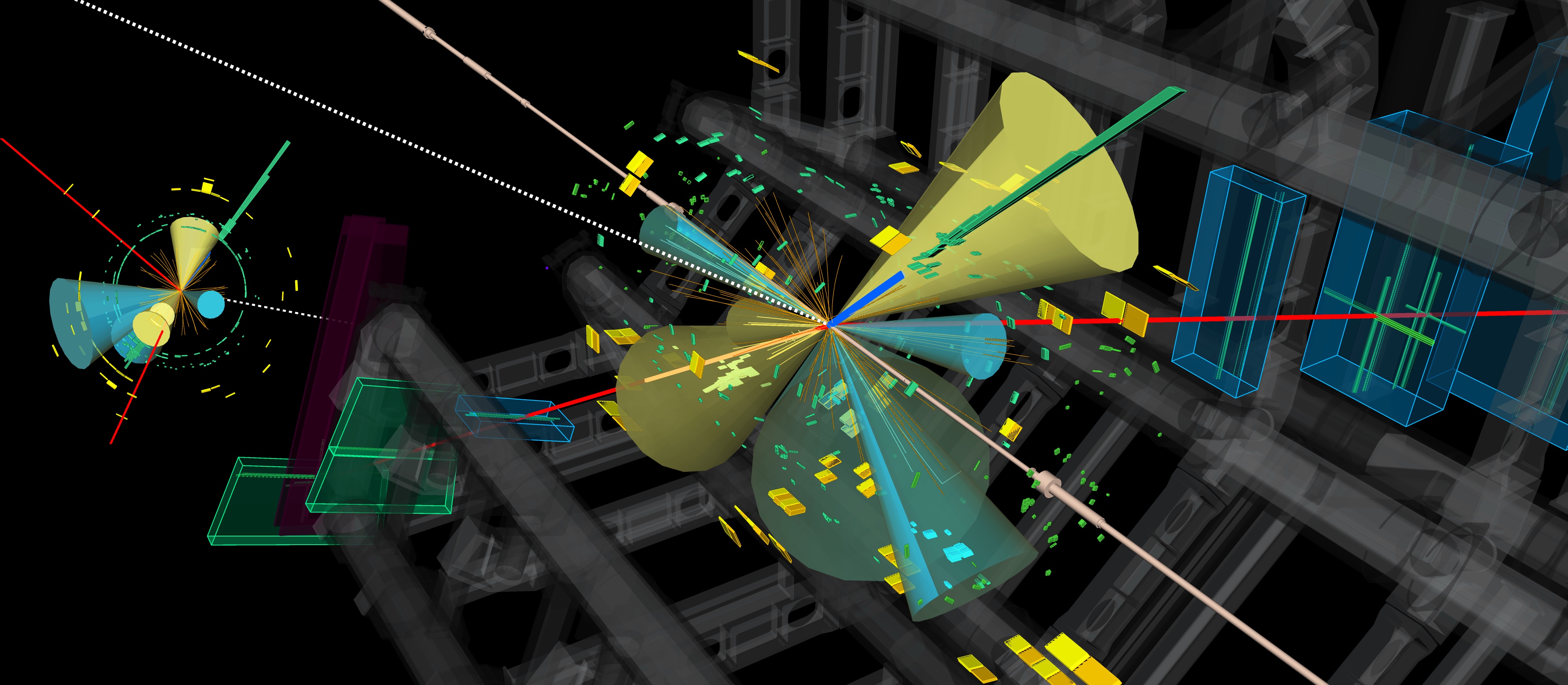ATLAS observes the simultaneous production of four top quarks
24 March 2023 | By
The ATLAS Collaboration at CERN announces the observation of the simultaneous production of four top quarks. This is one of the rarest – and heaviest – processes ever observed at the Large Hadron Collider (LHC), with a total particle mass of almost 700 GeV
As the heaviest elementary particle in the Standard Model, the top quark could provide insight into the origin of mass and the Higgs boson. The study of four-top-quark production is particularly exciting, as new particles or forces could alter the probability of producing four top quarks from Standard Model predictions.
The ATLAS Collaboration had previously found evidence for the simultaneous production of four top quarks in the full LHC Run-2 dataset recorded between 2015 and 2018. The team searched for four-top-quark events in which the top-quark decays yield either two leptons with the same charge or three leptons. Although these signatures account for only 13% of all four-top-quark decays, they have much smaller background contamination, allowing the team to more easily identify signal events.
The ATLAS Collaboration has observed the simultaneous production of four top quarks. The signal has a significance of 6.1 standard deviations – surpassing the 5 standard deviation threshold to claim observation.

For their new result, ATLAS physicists revised the search by leveraging developments in detector performance, new analysis techniques and a better understanding of major background processes. They improved their particle identification algorithms in order to spot more four-top-quark candidates, and used new data-driven estimates of the background contamination in the dataset. Further, in order to better distinguish four-top production from other Standard-Model processes, they used a more sensitive machine-learning technique called a Graph Neural Network (GNN). The GNN output for the most signal-rich selection is shown in the figure, demonstrating the separation power between signal (in red) and background processes.
These improvements enabled the ATLAS Collaboration to report the observation of four-top-quark production. The observed significance of the signal is 6.1 standard deviations – greater than the 5 standard deviation threshold to claim observation, and higher than the expected signal significance of 4.3 standard deviations. The measured rate of four-top-quark production is 1.9 times the Standard-Model prediction, consistent within 1.9 standard deviations.
Researchers also sought out signs of new physics phenomena in four-top production, including limits on effective field theories and the coupling of the top quark to the Higgs boson. With this measurement, the team determined the interaction between the top quark and the Higgs boson (the top Yukawa coupling) to be less than 1.8 times the Standard Model prediction at the 95% confidence level.
The ATLAS Collaboration will continue to push the precision of this measurement in Run 3 of the LHC (2022-ongoing). The higher centre-of-mass energy offers an almost 20% higher production rate than in Run 2. Future studies will give additional insight into the observed signal, helping researchers determine whether it truly matches the Standard Model – or if there are indications of new physics phenomena that lead to a deeper understanding of the fundamental nature of the Universe.
Explore the interactive event display
Dynamic view of a candidate candidate four-top-quark event event from data collected in 2016 (Run 304008, Event 1533145462). The event contains seven jets (four of them are b-tagged) visualised as blue cones; three of the top quarks produce leptons in their decay (two muons, shown in red, and one electron, shown in blue with yellow energy deposits in the electromagnetic calorimeter), and the fourth top quarks decay to jets. The reconstructed tracks of the charged particles in the Inner Detector are shown as orange lines. The energy deposits in the calorimeters are shown as yellow boxes. The missing transverse momentum is shown by a green dashed line.
Learn more
- Observation of four-top-quark production in the multilepton final state with the ATLAS detector (arXiv:2303.15061, see figures)
- Moriond EW 2023 presentation by Lisa Shabalina: Top highlights from ATLAS
- ATLAS and CMS observe simultaneous production of four top quarks, CERN News, March 2023
- ATLAS finds evidence of spectacular four-top quark production, Physics Briefing, May 2020
- ATLAS finds further confirmation of evidence for four top quark process, Physics Briefing, March 2021
- The Last Quark, ATLAS feature, July 2021




